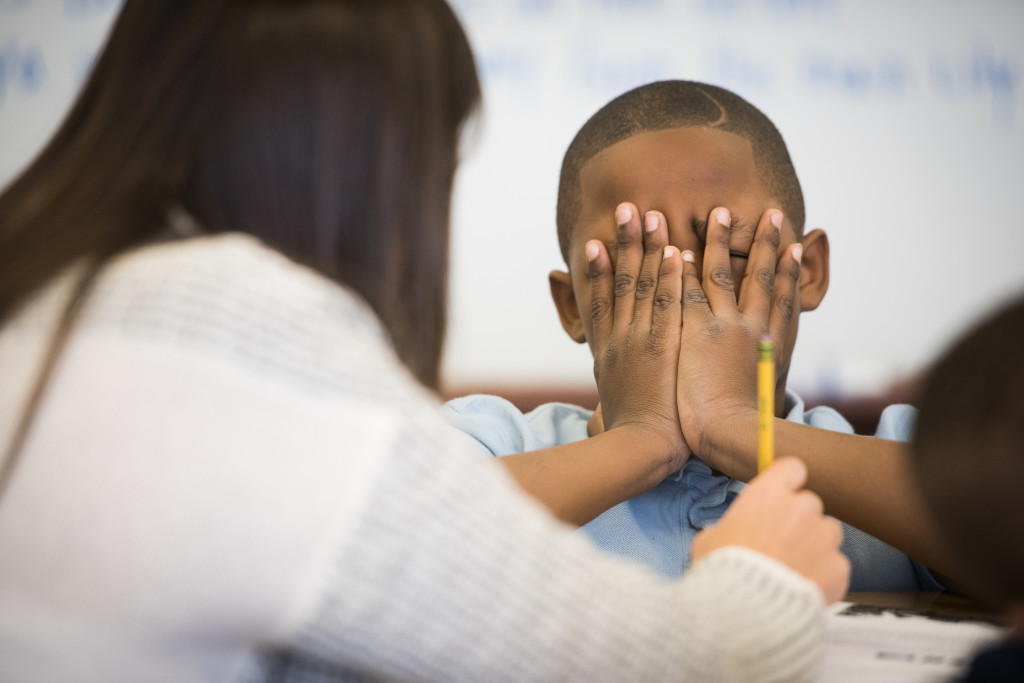Try Harder or Try Smarter?
 By Catherine Good, Ph.D., Senior Research Scientist
By Catherine Good, Ph.D., Senior Research Scientist
“Try harder!” “Keep at it.” “Put in more effort.” These are common phrases teachers may use to encourage and motivate their students through times of struggle. But is there a better way to promote students’ persistence and foster healthy mindsets about learning? In a previous post, we dispelled the misconception that a growth mindset is synonymous with trying hard. Today, I’d like to delve more deeply into the complicated construct of effort.
Think about all the different situations in which a teacher might encourage a student to keep trying or to apply more effort. Maybe the student is momentarily stuck on a problem, spinning his or her wheels without making any real progress. Or perhaps the student exhibits a long-term pattern of what appears to be low effort in class. Regardless of the specific situation, there are a number of strategies an educator can use with students beyond the simple encouragement of “try harder.”
Try a different strategy
Telling students to try harder rings hollow, because for many of them, they are in fact already trying very hard. Often times asking a student to try harder is not only ineffective, but can actually lead to discouragement and feelings of failure. Rather, students need to be reminded that they have other tools in their tool box. If using an equation to solve a math problem isn’t working, try representing the problem in pictures or graphs. If sounding out a word isn’t helping, try breaking it into parts. More effort is rarely the solution. But effective effort often is.
Consider what has worked well in the past
As students make their way through a challenge, they often focus on the instances where they struggle. Encourage them to reflect back over their process and make note of what strategies have worked well before. Past successes often hold clues to unlocking the current barrier. The process of reviewing past steps (or re-reading a text) can often illuminate errors, allowing for self-correction and continued progress. Productive persistence…that is the goal.
Have a plan and monitor progress
Often students feel stuck and give up, not because they don’t know the material, but because they blindly started working without taking a moment to make a plan about how to proceed. Ask students to start again – this time by first making a plan and evaluating the plan along the way. Perhaps the plan involves labeling a diagram before manipulating numbers. Or maybe the student commits to reading a text one paragraph at a time, checking for understanding before proceeding to the next paragraph. Encouraging students to make a plan and to monitor one’s progress throughout is another example of how teachers can scaffold effective effort strategies.
Reframe the meaning of effort
Sometimes the solution isn’t sharing a strategy with the student, but redefining the meaning of effort entirely. Students often view effort not as the path to improved learning, but as an indicator of limited intellectual abilities. They might hold the flawed belief that smart people are successful without making an effort, and thus, having to work hard must mean one is not smart. In this scenario, exerting effort becomes a risky endeavor because it signals the possibility of limited abilities and thus can lead to withdrawing effort. Because these views often are reinforced by a strong culture in academia around inherent intelligence (particularly in fields like science and math), educators must explicitly work to refute these myths in their classrooms. For example, rather than highlight the “genius” of academic heroes, emphasize the struggles they persisted through in their intellectual lives. This focus on process over outcome can redefine effort and strivings so that they no longer convey limitation, but rather unleash a students’ potential.
Create a classroom culture that values success through hard work
Ask any educator what they value in their students and many will say hard work, persistence and participation in class. Ask students the same question and they will often share a very different set of attributes: rapid, seemingly effortless success. Although educators know that the path to successful learning is paved with productive persistence and effective effort, students often devalue the very behaviors that will lead to greater learning. Creating a classroom culture that explicitly values success through hard work, participation and the types of effective effort strategies described above can orient students towards embracing effort rather than shying away from it.
These suggestions not only build effective effort strategies but also create safe spaces for students to embrace and value productive persistence. With these approaches, students do more than simply try harder, they also try smarter.
What strategies have you used in your classroom that encourage effective effort over more effort? Tweet at @Turnaround #The180.

Share This Story